Abstract
The process of applying a practice guideline to a patient requires a great deal of clinical data. AAPT (Appropriateness-Assessment Processing from Text) is an experimental computer program that can assess the appropriateness of coronary-artery bypass grafting surgery (CABG) in patients with coronary-artery disease (CAD) and chronic stable angina from the admission summaries of those patients. The AAPT architecture combines natural-language processing (NLP) and probabilistic inference. The NLP module identifies single clinical concepts of interest in the free-text document. The probabilistic inference module, a Bayesian belief network, estimates values for variables not specifically mentioned. AAPT produces a patient's summary of CAD that is similar to a manually generated clinical summary. Work is ongoing to improve AAPT and evaluate it as a tool to assist in the dissemination of guidelines and as a tool to encourage adherence to practice guidelines.
Full text
PDF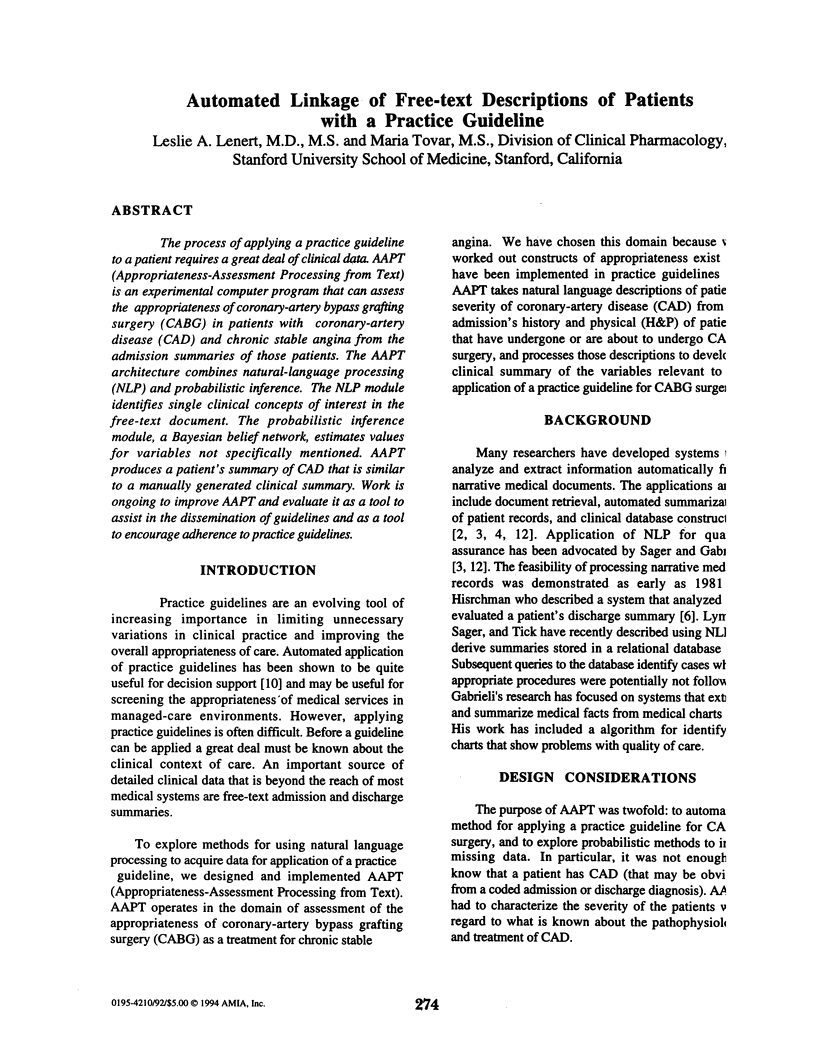
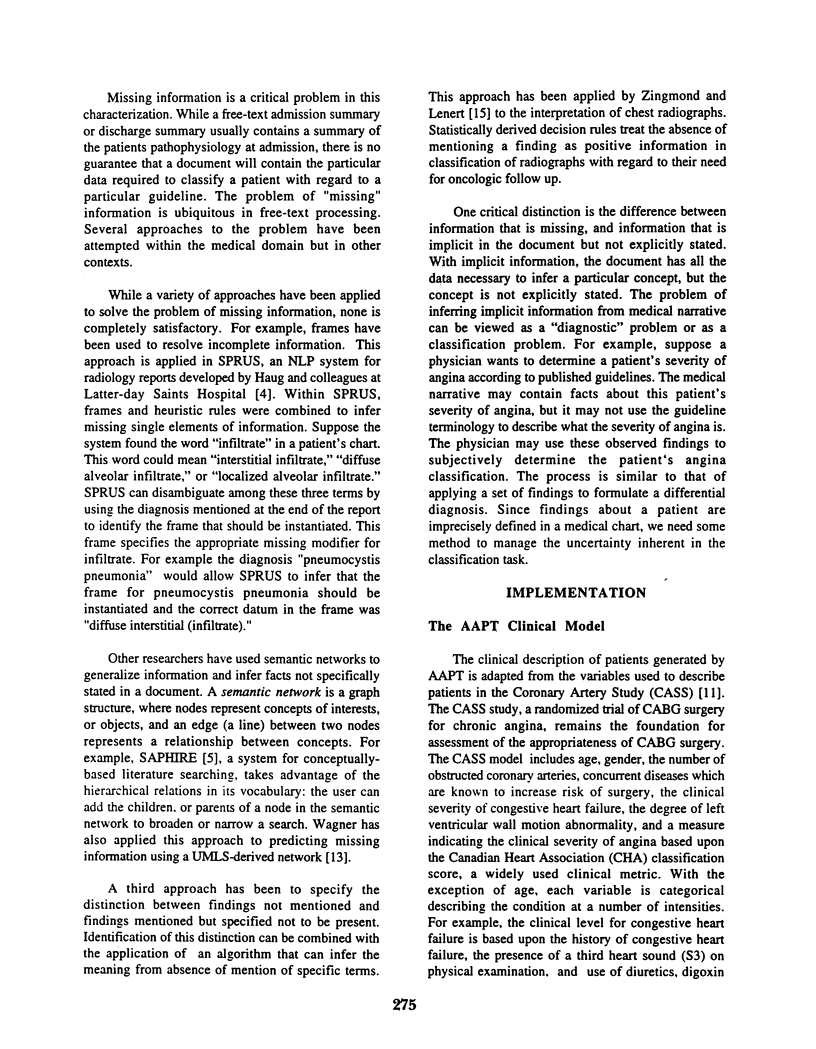
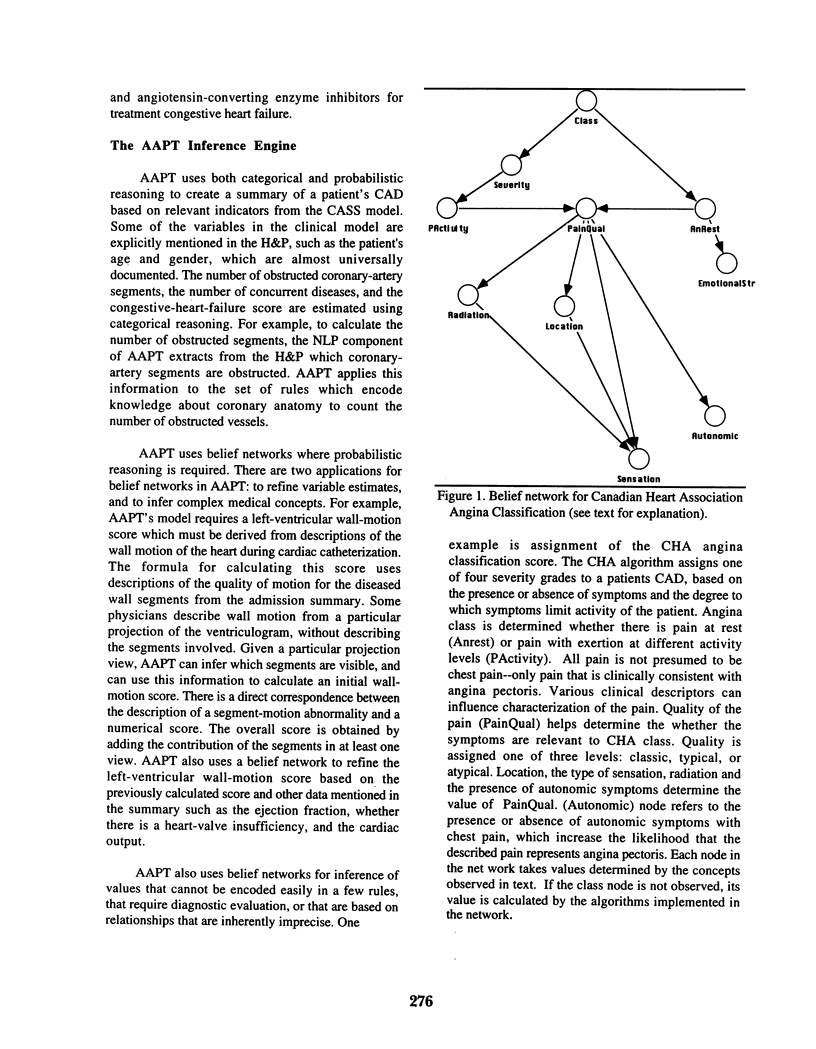
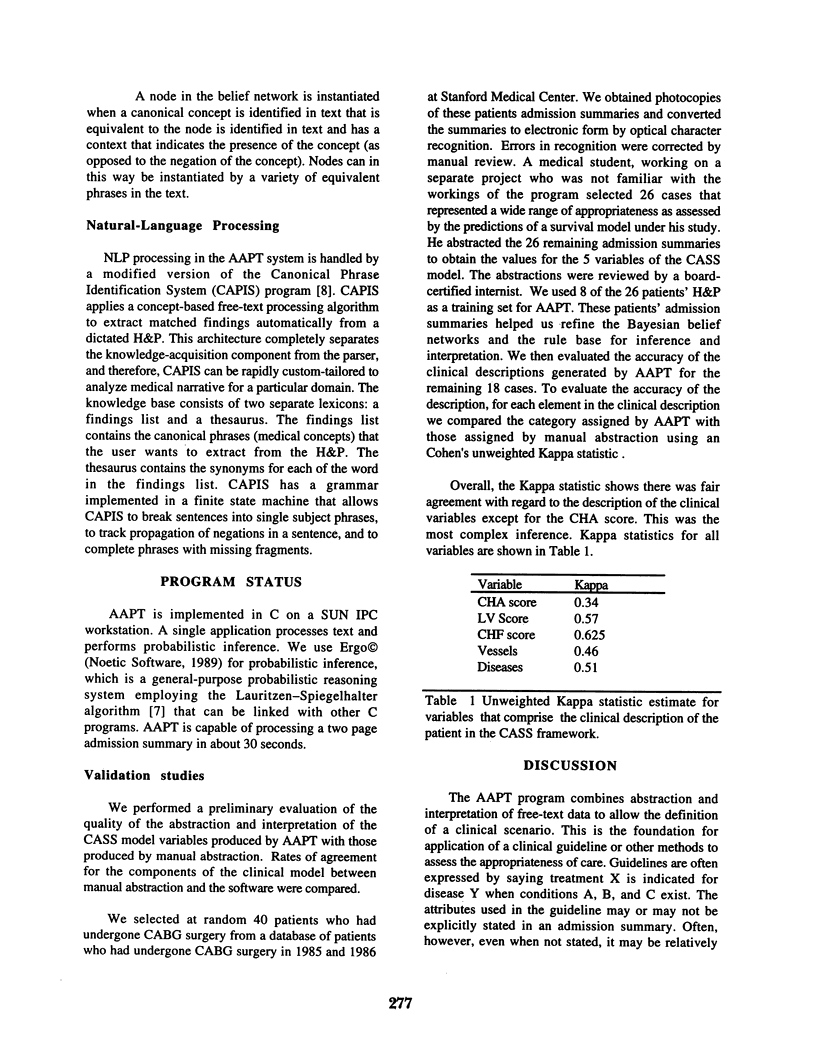
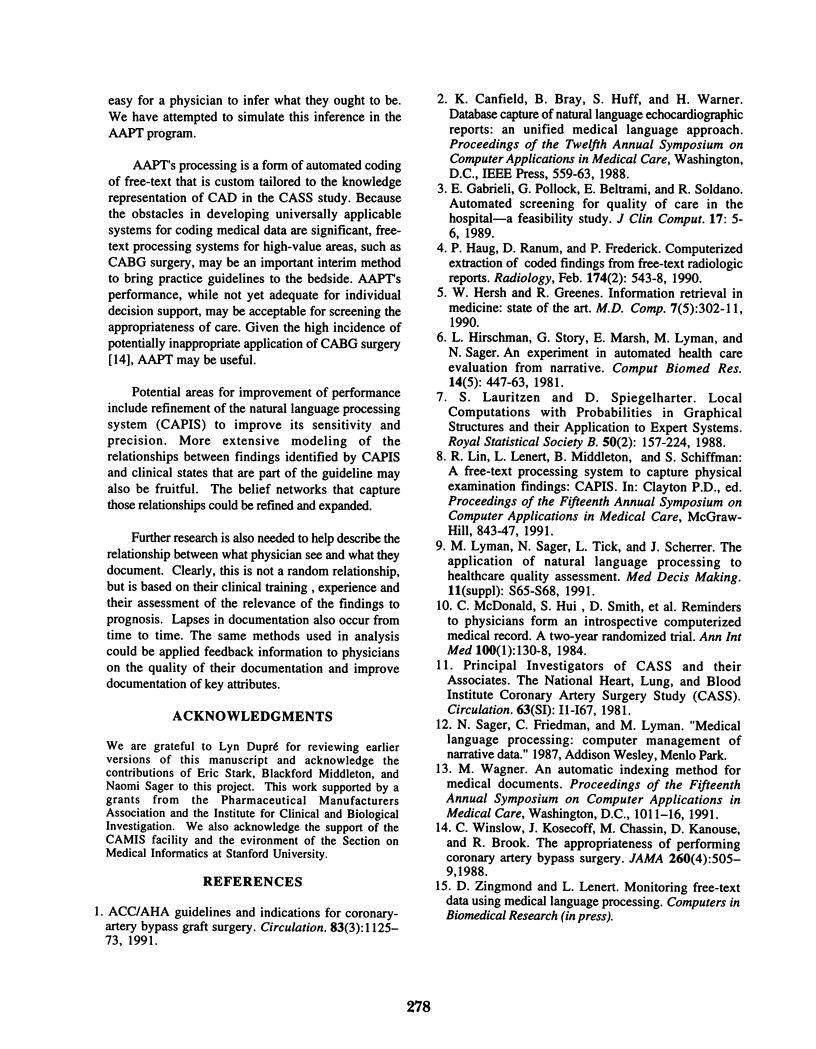
Selected References
These references are in PubMed. This may not be the complete list of references from this article.
- Haug P. J., Ranum D. L., Frederick P. R. Computerized extraction of coded findings from free-text radiologic reports. Work in progress. Radiology. 1990 Feb;174(2):543–548. doi: 10.1148/radiology.174.2.2404321. [DOI] [PubMed] [Google Scholar]
- Hersh W. R., Greenes R. A. Information retrieval in medicine: state of the art. MD Comput. 1990 Sep-Oct;7(5):302–311. [PubMed] [Google Scholar]
- Hirschman L., Story G., Marsh E., Lyman M., Sager N. An experiment in automated health care evaluation from narrative medical records. Comput Biomed Res. 1981 Oct;14(5):447–463. doi: 10.1016/0010-4809(81)90021-5. [DOI] [PubMed] [Google Scholar]
- Lyman M., Sager N., Tick L., Nhan N., Borst F., Scherrer J. R. The application of natural-language processing to healthcare quality assessment. Med Decis Making. 1991 Oct-Dec;11(4 Suppl):S65–S68. [PubMed] [Google Scholar]
- McDonald C. J., Hui S. L., Smith D. M., Tierney W. M., Cohen S. J., Weinberger M., McCabe G. P. Reminders to physicians from an introspective computer medical record. A two-year randomized trial. Ann Intern Med. 1984 Jan;100(1):130–138. doi: 10.7326/0003-4819-100-1-130. [DOI] [PubMed] [Google Scholar]
- Williams D. O., Most A. S. Responsiveness of the coronary circulation to brief vs sustained alpha-adrenergic stimulation. Circulation. 1981 Jan;63(1):11–16. doi: 10.1161/01.cir.63.1.11. [DOI] [PubMed] [Google Scholar]
- Winslow C. M., Kosecoff J. B., Chassin M., Kanouse D. E., Brook R. H. The appropriateness of performing coronary artery bypass surgery. JAMA. 1988 Jul 22;260(4):505–509. [PubMed] [Google Scholar]


